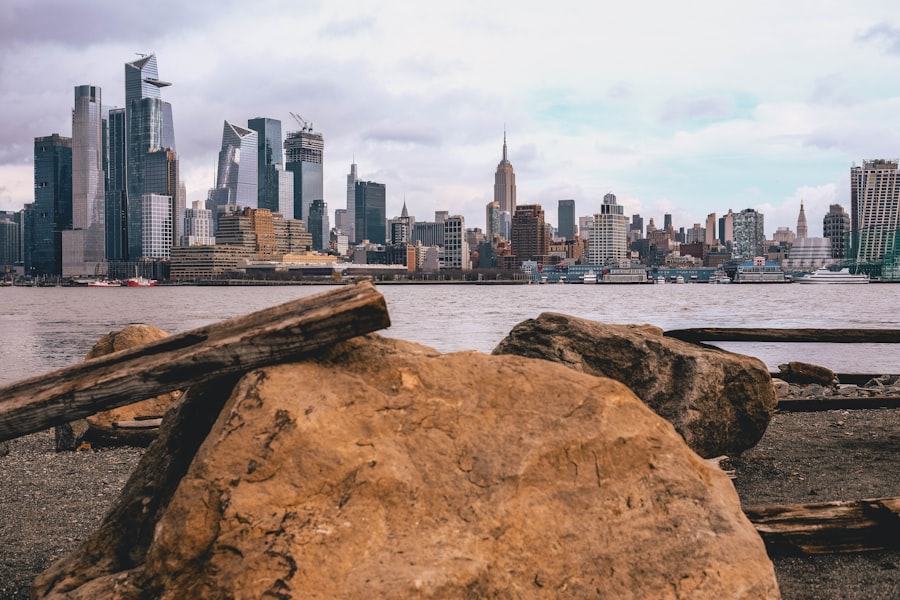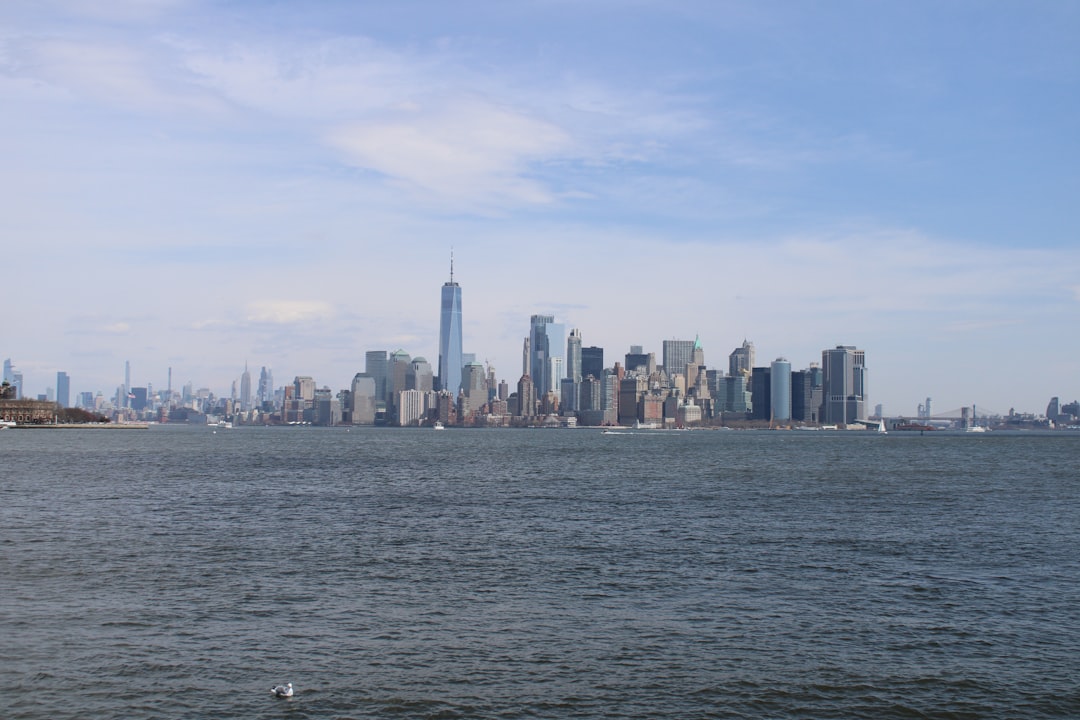Manhattan’s bedrock serves as the very foundation of one of the world’s most iconic urban landscapes. This solid geological base not only supports the towering skyscrapers and bustling streets of New York City but also tells a story that stretches back millions of years. The bedrock is a testament to the dynamic processes that have shaped the Earth, providing insights into the planet’s geological history.
As one traverses the streets of Manhattan, they walk atop a complex tapestry of rock formations that have witnessed the rise and fall of civilizations, the ebb and flow of natural forces, and the relentless march of time. Understanding Manhattan’s bedrock is crucial for various fields, including geology, urban planning, and environmental science. The bedrock’s characteristics influence everything from construction practices to water management systems.
As such, it is not merely a passive backdrop but an active participant in the city’s development and sustainability. This article delves into the formation, composition, and significance of Manhattan’s bedrock, exploring its impact on architecture, infrastructure, and even the city’s water system.
Key Takeaways
- Manhattan’s bedrock plays a crucial role in shaping the city’s landscape and infrastructure.
- The bedrock is primarily composed of metamorphic rock, formed over millions of years.
- Geological features such as faults and folds in the bedrock have influenced the city’s architecture and development.
- The bedrock’s stability and strength have been essential in supporting the city’s skyscrapers and underground infrastructure.
- Understanding Manhattan’s bedrock is vital for managing geological hazards and preserving the city’s historical and natural heritage.
Formation and Composition of Manhattan’s Bedrock
The bedrock of Manhattan is primarily composed of metamorphic rocks, which have undergone significant changes due to heat and pressure over geological time. These rocks were formed during the Precambrian era, approximately 1.3 billion years ago, making them some of the oldest geological formations in North America. The primary types of rock found in this region include schist, gneiss, and granite, each contributing to the unique geological identity of Manhattan.
The schist, characterized by its layered appearance, is rich in minerals such as mica and garnet, while gneiss exhibits a banded texture due to its mineral composition. The formation of these rocks is a result of complex geological processes, including tectonic activity and metamorphism. During the collision of tectonic plates, immense pressure and heat transformed existing rocks into their current forms.
The intricate interplay between these geological forces has resulted in a diverse array of rock types that can be found throughout Manhattan, each with its own unique properties and characteristics.
Geological Features and Structures of Manhattan’s Bedrock

Manhattan’s bedrock is not just a uniform mass; it is characterized by a variety of geological features and structures that reflect its tumultuous history. One notable feature is the presence of fault lines, which are fractures in the Earth’s crust where movement has occurred. These faults can influence both the stability of buildings and the flow of groundwater beneath the surface.
Additionally, the bedrock exhibits folds and intrusions that reveal the dynamic processes that have shaped it over eons. Another significant aspect of Manhattan’s geological structure is its topography. The island’s elevation varies considerably, with some areas rising sharply while others remain relatively flat.
This variation is largely due to the underlying bedrock, which dictates how water drains and how soil accumulates. The rugged terrain has also played a role in determining where development has occurred, as certain areas are more suitable for construction than others. Understanding these geological features is essential for urban planners and architects who must navigate the challenges posed by the bedrock when designing new structures.
Influence of Manhattan’s Bedrock on the City’s Architecture
| Aspect | Impact |
|---|---|
| Skyscraper Height | Manhattan’s bedrock allows for the construction of tall skyscrapers that are supported by the solid foundation. |
| Building Stability | The bedrock provides a stable base for buildings, reducing the risk of structural instability during earthquakes or other natural disasters. |
| Construction Costs | Building on bedrock can reduce construction costs by providing a solid foundation that requires less extensive reinforcement. |
| Architectural Innovation | The presence of bedrock has influenced architectural innovation, leading to the development of unique building designs and construction techniques. |
The architectural landscape of Manhattan has been profoundly influenced by its bedrock. The solid foundation provided by the underlying rock allows for the construction of skyscrapers that reach impressive heights.
The durability and strength of the bedrock enable architects to push the boundaries of design, resulting in some of the most recognizable skylines in the world. Moreover, the characteristics of Manhattan’s bedrock have led to innovative construction techniques tailored to its unique geological conditions. For instance, deep foundations are often required to anchor buildings securely into the bedrock, ensuring stability against potential seismic activity or other environmental factors.
The use of advanced engineering methods allows for creative architectural solutions that harmonize with the natural landscape while maximizing space in one of the most densely populated areas on Earth.
Impact of Manhattan’s Bedrock on the City’s Infrastructure
Beyond architecture, Manhattan’s bedrock plays a critical role in shaping the city’s infrastructure. The underground network of tunnels, subways, and utilities must navigate the complexities posed by the bedrock’s composition and structure. Engineers must carefully assess the geological conditions before undertaking any construction projects to ensure that they do not compromise existing infrastructure or create hazards.
The presence of solid bedrock can both facilitate and hinder infrastructure development. On one hand, it provides a stable base for underground systems; on the other hand, it can complicate excavation efforts. For example, when constructing subway lines or utility tunnels, workers may encounter hard rock that requires specialized equipment to break through.
This can lead to increased costs and extended timelines for projects. Understanding these challenges is essential for city planners who aim to create efficient and resilient infrastructure systems that can withstand both natural forces and human demands.
Role of Manhattan’s Bedrock in the City’s Water System

Manhattan’s bedrock also plays a vital role in shaping the city’s water system. The geology beneath the surface influences how water flows through aquifers and drainage systems, impacting both water supply and management practices. The solid rock formations can create barriers that affect groundwater movement, leading to variations in water availability across different areas of the island.
Additionally, understanding the relationship between bedrock and water systems is crucial for managing stormwater runoff. The impermeable nature of certain rock types can lead to increased surface runoff during heavy rainfall events, necessitating effective drainage solutions to prevent flooding. Urban planners must consider these geological factors when designing stormwater management systems to ensure that they are both effective and sustainable.
Geological Hazards and Risks Associated with Manhattan’s Bedrock
While Manhattan’s bedrock provides many benefits, it also presents certain geological hazards and risks that must be carefully managed. One significant concern is seismic activity; although New York City is not located near major fault lines like California, minor earthquakes can still occur due to stress along existing faults within the bedrock. These seismic events can pose risks to buildings and infrastructure if not adequately addressed during construction.
Another potential hazard is erosion and weathering processes that can affect exposed rock surfaces over time. As rainwater interacts with minerals in the bedrock, chemical weathering can occur, leading to changes in rock stability. Urban development can exacerbate these issues by altering natural drainage patterns or increasing surface runoff.
Therefore, ongoing monitoring and assessment of geological conditions are essential for mitigating risks associated with Manhattan’s bedrock.
Preservation and Conservation of Manhattan’s Bedrock
Preserving Manhattan’s bedrock is crucial not only for maintaining the structural integrity of buildings and infrastructure but also for protecting its geological heritage. As urban development continues to expand, there is a growing need to balance progress with conservation efforts that safeguard this valuable resource. Initiatives aimed at preserving exposed rock formations or integrating them into public spaces can enhance community awareness of the city’s geological history.
Moreover, educational programs focused on geology can foster a greater appreciation for Manhattan’s bedrock among residents and visitors alike. By promoting awareness of its significance, stakeholders can encourage responsible development practices that prioritize sustainability while respecting the natural environment. Collaborative efforts between city planners, geologists, and community organizations can lead to innovative solutions that honor both urban growth and geological preservation.
Future Challenges and Opportunities in Studying Manhattan’s Bedrock
As urbanization continues to reshape Manhattan, future challenges will arise in studying its bedrock and understanding its implications for city planning and development. Climate change poses significant risks that may alter geological conditions over time, necessitating ongoing research into how these changes could impact infrastructure and water systems. Additionally, advancements in technology may provide new tools for geologists to analyze bedrock more effectively, leading to improved understanding and management strategies.
Opportunities also exist for interdisciplinary collaboration between geologists, urban planners, architects, and environmental scientists. By working together, these professionals can develop innovative solutions that address both current challenges and future uncertainties related to Manhattan’s bedrock. Engaging with local communities in these discussions can further enhance public understanding and support for sustainable practices that prioritize both urban development and geological conservation.
The Significance of Manhattan’s Bedrock in Understanding Earth’s History
Manhattan’s bedrock serves as a window into Earth’s history, offering valuable insights into geological processes that have shaped not only New York City but also our planet as a whole. The ancient rocks found beneath the surface tell stories of tectonic movements, volcanic activity, and climatic changes over billions of years. By studying these formations, geologists can piece together a narrative that reveals how Earth has evolved over time.
Furthermore, understanding Manhattan’s bedrock contributes to broader discussions about geology on a global scale. The processes that formed these rocks are not unique to New York; they occur worldwide and provide context for understanding similar formations elsewhere. By examining local geology within a global framework, researchers can gain insights into fundamental questions about Earth’s history and its ongoing transformations.
The Importance of Exploring Manhattan’s Bedrock
In conclusion, exploring Manhattan’s bedrock is essential for appreciating both its geological significance and its impact on urban life. This ancient foundation not only supports one of the world’s most vibrant cities but also offers valuable lessons about Earth’s history and ongoing processes. As New York City continues to evolve, understanding its bedrock will be crucial for sustainable development practices that honor both human needs and environmental stewardship.
The interplay between geology and urbanization presents both challenges and opportunities for future generations. By prioritizing research, education, and conservation efforts related to Manhattan’s bedrock, stakeholders can ensure that this vital resource remains an integral part of the city’s identity for years to come. Ultimately, exploring Manhattan’s bedrock enriches our understanding of not only New York City but also our planet as a whole—reminding us that beneath every bustling street lies a story waiting to be uncovered.
The fascinating geological history of Manhattan’s bedrock is intricately linked to the broader geological features of the region. For those interested in exploring this topic further, a related article can be found on MyGeoQuest, which delves into the geological formations and history of the area. This article provides a comprehensive overview of how the bedrock has influenced the city’s development and infrastructure. To read more about it, visit the article on MyGeoQuest.
WATCH THIS! The Real Cost of NYC Living: Your Wallet, Sanity, and Subway Survival Skills
FAQs
What is Manhattan bedrock?
Manhattan bedrock refers to the solid rock foundation that underlies the island of Manhattan in New York City. It is composed primarily of schist, a type of metamorphic rock.
How deep is the bedrock in Manhattan?
The bedrock in Manhattan is located at varying depths, with some areas reaching depths of over 100 feet. In Midtown Manhattan, the bedrock is relatively shallow, while in Lower Manhattan, it can be much deeper.
Why is Manhattan bedrock important?
The bedrock in Manhattan is important because it provides a stable foundation for the city’s skyscrapers and other buildings. It also influences the city’s infrastructure, including its subway system and underground utilities.
How does Manhattan bedrock affect construction?
Manhattan bedrock affects construction by influencing the depth of foundations and the methods used for excavation. Builders must take the bedrock into account when planning and constructing new buildings in the city.
Is Manhattan bedrock prone to seismic activity?
Manhattan bedrock is not considered to be highly prone to seismic activity. However, it can still experience minor earthquakes, and buildings in the city are designed to withstand such events.
